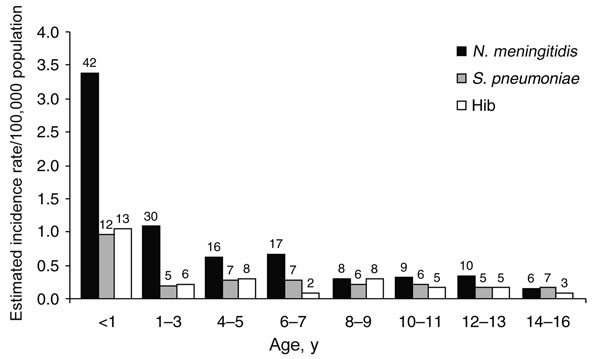Volume 14, Number 7—July 2008
Research
A Prospective Study of Etiology of Childhood Acute Bacterial Meningitis, Turkey
Figure 2

Figure 2. Distribution of bacteria causing childhood acute bacterial meningitis in different age groups. Neisseria meningitidis was the most common cause of meningitis, and the highest estimated incidence was in children <1 year of age for all 3 bacteria. The number of cases is indicated above each bar. S. pneumoniae, Streptococcus pneumoniae; Hib, Haemophilus influenzae type b.
Page created: July 12, 2010
Page updated: July 12, 2010
Page reviewed: July 12, 2010
The conclusions, findings, and opinions expressed by authors contributing to this journal do not necessarily reflect the official position of the U.S. Department of Health and Human Services, the Public Health Service, the Centers for Disease Control and Prevention, or the authors' affiliated institutions. Use of trade names is for identification only and does not imply endorsement by any of the groups named above.